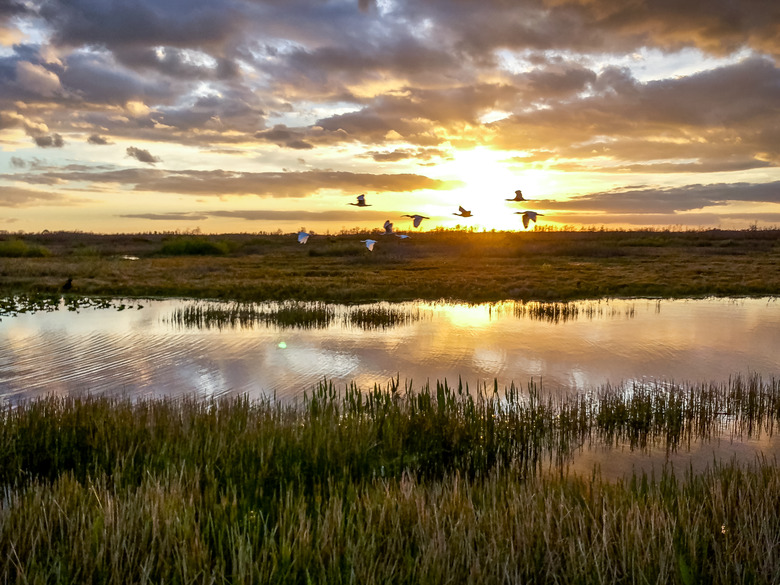The Disadvantages Of Wetland Nature Reserves
Wetlands are nature's system of flood control and water cleaning. They store excess water from a river flood or during a storm and allow it to flow slowly back to the river as a storm abates. Wetlands filter out excess nutrients and pollutants and provide habitats for a wide variety of wildlife. In nature, wetlands can be swamps, bogs and marshes along a coastline, such as the Florida Everglades, or an inland system, such as the Okavango Delta in Botswana. The past two decades have witnessed extensive wetland nature reserve restoration and construction. Newly constructed wetland nature reserves provide wastewater treatment facilities as well as wildlife habitats
Disease
Disease
Wetlands in the form of swamps are breeding grounds for mosquitoes and other diseases. Mosquito populations may be controlled partly in constructed wetlands.
Land Use
Land Use
Constructed wetlands are land-intensive undertakings. In the past, many countries had policies of draining and filling in natural wetlands to permit urban development. Levees, heightened river banks and sea walls provided flood defenses. Hurricane Katrina demonstrated the folly of such policies.
Methane Production
Methane Production
Methane has 10 times the atmospheric warming capacity of carbon dioxide and is the most effective greenhouse gas for global warming. Wetlands produce about one quarter of the Earth's atmospheric methane through the anaerobic decomposition of organic matter.
Inadequate Remediation
Inadequate Remediation
Constructed wetlands are unable to treat highly toxic modern wastewater. Such waste needs to be pretreated in special installations, which could impact on the visual beauty of a nature reserve. Residual pollutants may have a negative effect on the reserve's wildlife.
Cite This Article
MLA
Kielmas, Maria. "The Disadvantages Of Wetland Nature Reserves" sciencing.com, https://www.sciencing.com/info-8396288-disadvantages-wetland-nature-reserves/. 22 November 2019.
APA
Kielmas, Maria. (2019, November 22). The Disadvantages Of Wetland Nature Reserves. sciencing.com. Retrieved from https://www.sciencing.com/info-8396288-disadvantages-wetland-nature-reserves/
Chicago
Kielmas, Maria. The Disadvantages Of Wetland Nature Reserves last modified March 24, 2022. https://www.sciencing.com/info-8396288-disadvantages-wetland-nature-reserves/
